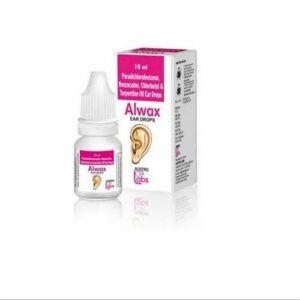BENZOCAINE + CHLORBUTOL + PARADICHLOROBENZENE
Benzocaine: Benzocaine is a local anesthetic drug that is commonly used to provide temporary relief from pain and itching caused by minor irritations and conditions such as sunburn, insect bites, teething pain, and minor cuts or abrasions.
The mechanism of action of benzocaine involves blocking nerve signals in the body, specifically by inhibiting the sodium ion channels necessary for the conduction of nerve impulses. This action numbs the area and provides temporary relief from pain and itching.
Benzocaine is available in various formulations, including creams, gels, sprays, lozenges, and ointments. It should be applied topically to the affected area or used as directed by a healthcare professional.
The dose of benzocaine depends on the specific formulation and the condition being treated. It is important to follow the instructions provided on the product label or as directed by a healthcare professional. It is generally recommended to use benzocaine sparingly and not to exceed the recommended dose.
While benzocaine is generally safe to use, there are some potential side effects that can occur. Common side effects include skin irritation, redness, swelling, or a burning sensation at the site of application. Rarely, individuals may experience allergic reactions such as rash, hives, itching, dizziness, or difficulty breathing. If any of these side effects occur, it is important to discontinue the use of benzocaine and seek medical attention.
It is worth noting that benzocaine should not be used on certain areas of the body, such as broken or irritated skin, or on large areas of the body without the recommendation of a healthcare professional. It is always advisable to consult with a healthcare professional or pharmacist before using benzocaine, especially in children, pregnant or breastfeeding women, or if there are any concerns about potential drug interactions or medical conditions.
Chlorbutol: Chlorbutol, also known as chlorobutanol, is a medication that belongs to the class of drugs called sedatives and hypnotics. It is primarily used as a local anesthetic and antiseptic agent in the pharmaceutical industry.
Chlorbutol acts as a central nervous system depressant and exhibits sedative, hypnotic, and mild analgesic properties. It works by depressing the activity of the central nervous system, leading to relaxation and inducing sleep. As a local anesthetic, it can provide temporary relief of pain by numbing the affected area.
Chlorbutol can be found in various formulations including topical creams, ointments, and suppositories. The dosage and administration may vary depending on the specific product and the condition being treated. It is important to follow the instructions provided by the healthcare professional or on the product label.
Like any medication, chlorbutol can cause side effects. Common side effects may include skin irritation, burning, itching, or redness at the site of application. In some cases, individuals may experience allergic reactions such as rash, hives, or difficulty breathing. If any concerning side effects occur, it is important to seek medical attention immediately.
It is worth mentioning that chlorbutol should be used with caution and should be avoided in individuals with a history of hypersensitivity to the drug or its ingredients. Additionally, it is important to inform the healthcare professional about any existing medical conditions and ongoing medications before using chlorbutol to prevent potential drug interactions or complications.
Paradichlorobenzene: Paradichlorobenzene is a chemical compound primarily used as a fumigant to control pests and as a deodorizer for mothballs. It is a white crystalline solid with a distinctive strong smell.
As a fumigant, paradichlorobenzene works by releasing a gas that kills or repels insects, such as moths, beetles, and ants. It is also effective against various types of worms and fungus. In deodorizers, it works by masking or neutralizing unpleasant odors.
The dose of paradichlorobenzene depends on its intended use. For pest control, it is commonly used in the form of mothballs or crystals placed in enclosed spaces like closets or storage areas. The exact dosage will vary depending on the size of the space and the severity of the pest problem. It is important to follow the instructions provided by the manufacturer or seek professional advice when using paradichlorobenzene for pest control.
In terms of side effects, paradichlorobenzene can have adverse effects on human health. Inhalation of high concentrations of the vapor can cause irritation of the respiratory system, including the nose, throat, and lungs. Prolonged or repeated exposure to paradichlorobenzene may lead to liver and kidney damage, although this is rare. Skin contact with the substance can cause dermatitis or skin irritation.
Ingestion of paradichlorobenzene can be highly toxic and should be avoided. The substance is not meant to be taken orally, and accidental ingestion may lead to symptoms such as nausea, vomiting, abdominal pain, and in severe cases, liver or kidney damage.
It is important to use paradichlorobenzene in a well-ventilated area and avoid prolonged exposure to the fumes. In case of accidental ingestion, inhalation, or skin contact, it is crucial to seek medical attention immediately.
Please note that the use of paradichlorobenzene is strictly regulated in some countries, and it is important to follow local regulations and guidelines when using this chemical.

